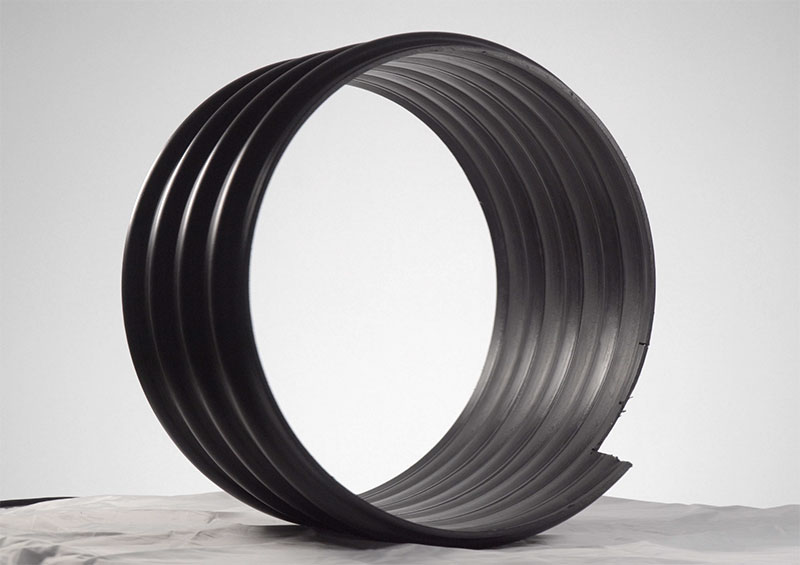Polyethylene (HDPE) corrugated pipe is an attractive product for underground drainage in the railway industry due to its corrosion resistance, friction resistance, long life cycle and flexibility.
Currently, these pipes need to be produced from 100% virgin resin. However, the railway industry has recently shown interest in the use of recycled materials to produce corrugated pipes, as recycling materials have better environmental and economic benefits. The use of polyethylene corrugated pipes produced from recycled materials has been successful in agriculture and other underground drainage fields, although those pipes are often not subjected to harsh application loads like railway applications.
A major concern with bellows containing recycled materials is that recycled materials in the shallow tunnel application may be contaminated from the outside of the pipe wall, thereby reducing the service life of the pipe. Contamination in a critical size interval can become a stress concentration point and potentially form a stress crack when a large dynamic load is received.

According to the polyethylene composite pipe manufacturer, in order to investigate and evaluate this problem, the polyethylene bellows containing recycled materials were installed on a transportation railway line in the northwestern part of Binzhou, USA. The upper end of the outer wall of the pipe is only 2 feet away from the bottom of the railway track. The pipe is fitted with a strain gauge and an extensometer is used to record the dynamic loading effects received by the pipe wall. The collected data is compared with the data collected by the PPI on the freight rail line. These data were further used in the development of laboratory accelerated tests for the long-term performance evaluation of pipes containing various regrinds to determine the impact of pollution on dynamic cyclic loading in shallow buried railway applications.
The data indicates that the pipe is subjected to shallow-buried railway loads, and the dynamic strain and bending of the pipe wall is very low (measured wall strain is less than 0.2%). However, the dynamic load frequency is very high, and it can be seen that many pipes have more than one million cycle load changes per year, and each train has 200 cycles. The observed tensile strain at the wall of the tube was between the top of the tube corrugation and the arch line. So far, laboratory tests have not been completed, but the test and evaluation methods will be presented along with the evaluation of dynamic load data, and the preliminary results of our research are given.